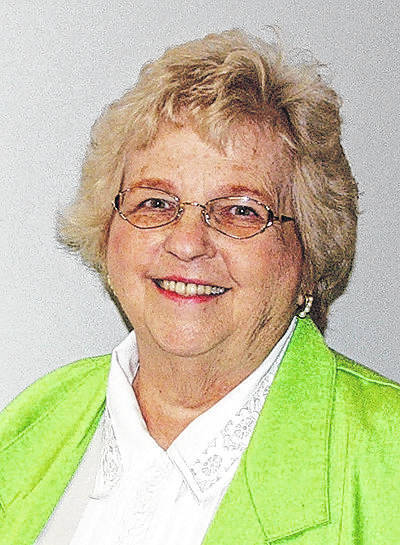
Spring is finally here, and with it, trips to the cemetery to put flowers on the graves of loved ones. Cemeteries have been in Greene County since before its inception.
Woodland Cemetery is not the oldest cemetery in Xenia. At first cemeteries were established in the church yard. There was the German Reformed cemetery on Church Street which was abandoned when Woodland was established. The Methodist on Water Street was sold by order of court. The Gowdy on Water Street and the Associate at the corner of Market and West Streets also abandoned. Later the property was sold to the Board of Education for a school.
On April 15, 1847, it was determined that a new cemetery should be established for the use of the citizens of Xenia. A cemetery association was formed with Joshua Martin as chairman of the meeting. Directors were elected with E F. Drake as president; J. A. Coburn was secretary and William Cooper, treasurer.
A price of $10 per lot was established. The board purchased 20 acres from Lewis Beall at $75 per acre and an additional 66 hundredth of an acre from Samuel Galloway. In 1867, the price per lot was $30 and additional acreage was purchased from M. D. Gatch. Lots were increased to $40 with a burial fee of $4.
The first survey was made on March 31, 1849 by a Mr. Daniels.
Mr. David Cline was the assistant to the surveyor who was to plot the cemetery. The surveyor was out of town when the first burial was to take place and so Mr. Cline laid out the first lot and on December 7 personally dug the grave for Mary Ann Hollingshead the 22-year old daughter of William Hollingshead who had died of tuberculosis.
The next year was a busy one for Mr. Cline. This was the year of the cholera epidemic. He reported that during the months of July and August 1848, he buried eighty-five victims of the dreaded disease.
The first victim of the plaque was not a local resident, but a stranger who died at the depot in June.
According to Dill’s History of Greene County, Mr. Cline was kept quite busy with burials in 1848. When Hillory Nell, the first citizen of Xenia died with cholera, wat taken to the cemetery the grave had not been dug, since Mr. Cline has not received notice soon enough to complete the task.
One of the men who accompanied the deceased was impatient about the delay and asked “Can’t you keep a few graves dug ahead, and not wait til a man dies, and you get an order before you begin the work and thus keep us waiting?”
Mr. Cline said “certainly if you will take the measure of the people before they die; and if you think that is a good idea, I will just take your measurement right here, and when they haul you out, will put you I without delay” Needless to say, that ended the conversation.
Mr. Cline became the person in charge of the cemetery even before it was laid off. The property was enclosed by a rail fence and there was no building available to store tools and other necessary equipment. It was he who assisted in laying out the lots and avenues. He planted a pine tree in the center of the cemetery and planted other trees along the avenues. He planted a hedge fence on the perimeter as well.
As the custodian of the cemetery, he was responsible for selling lots to families before the need arose. At that time, purchasing a burial plot before the need was not a welcome idea to many.
He was responsible for the exhumation of the bodies from the Methodist, German Reformed and Beall cemeteries which were then re-interred at the new Woodland Cemetery.
He served as sexton for Woodland for many years and upon retiring became street commissioner for two years for the City of Xenia.
Another person who had a great deal to do with the early formation of the cemetery was David Medsker.
David Medsker came to Xenia from Highland County in 1929 and became the first undertaker in Xenia. He explained that when he first began to make coffins, he lined them with white paper, but he was not satisfied with the finished product. After some consideration, he determined that muslin would be a better covering inside the casket. The first casket he made with muslin inside was made for Philip Davis who was buried in short breeches and knee buckles, according to the customs of the time,
Medsker stated that in his fifty years as an undertaker, he interred over seven thousand residents. He was one of the trustees of the cemetery for many years.
In 1892, the cemetery began making its own concrete vaults.
There was a small chapel erected in the center of the grounds in 1913, but in 1937, it was not in use. By this time, funeral homes were conducting services in their establishments and so it was torn down and the stone was used to construct a new residence for the superintendent.
In recent years a mausoleum has been erected on the grounds.
If you have ever wondered about the beautiful stone columns which grace the entry; originally the four columns were part of the 18943 court house which was razed in 1900 to make way for the present court house.


